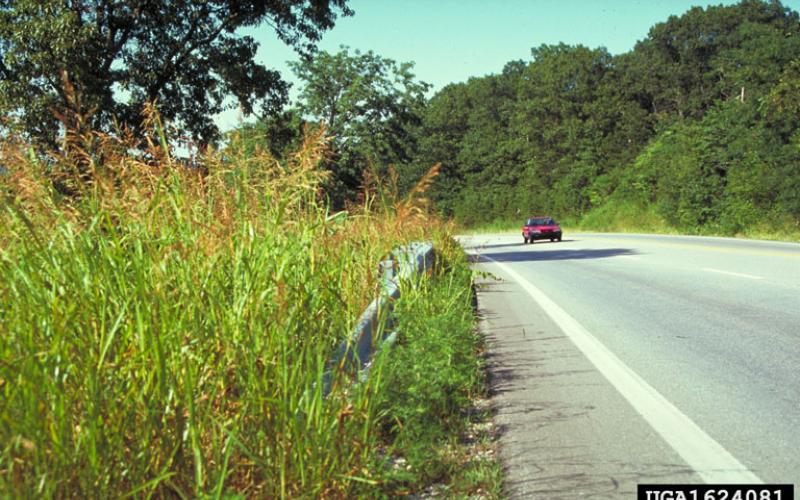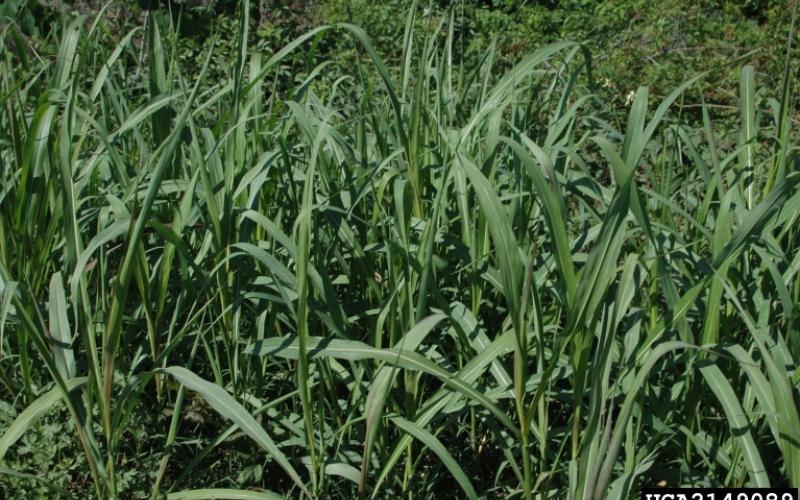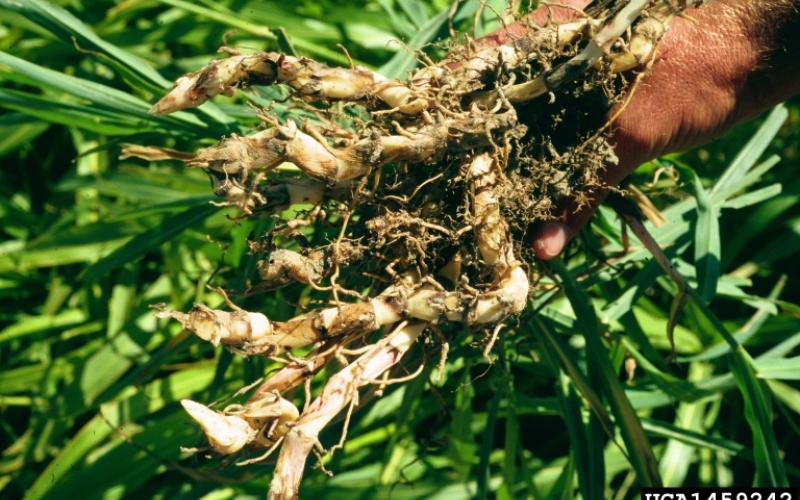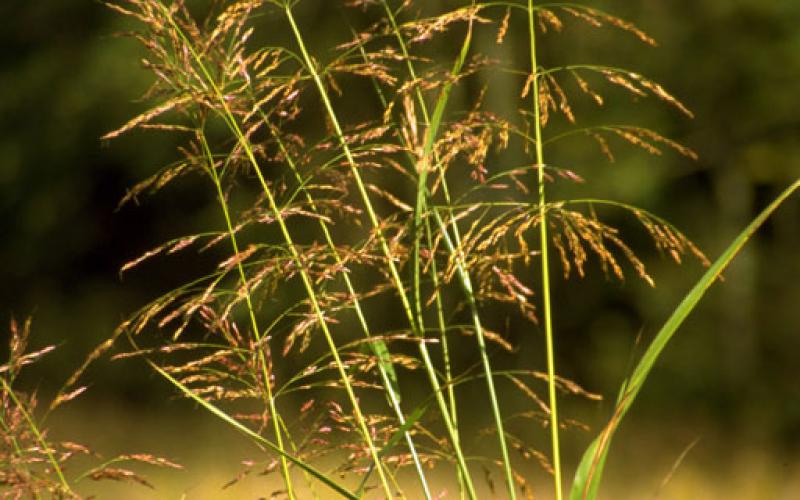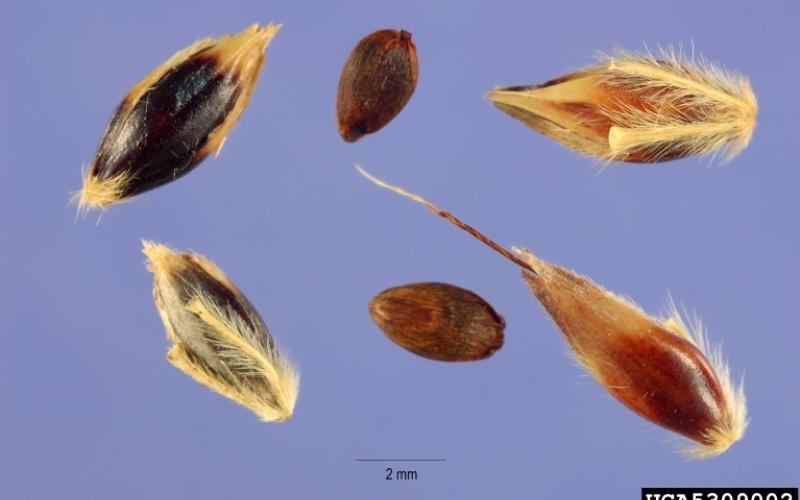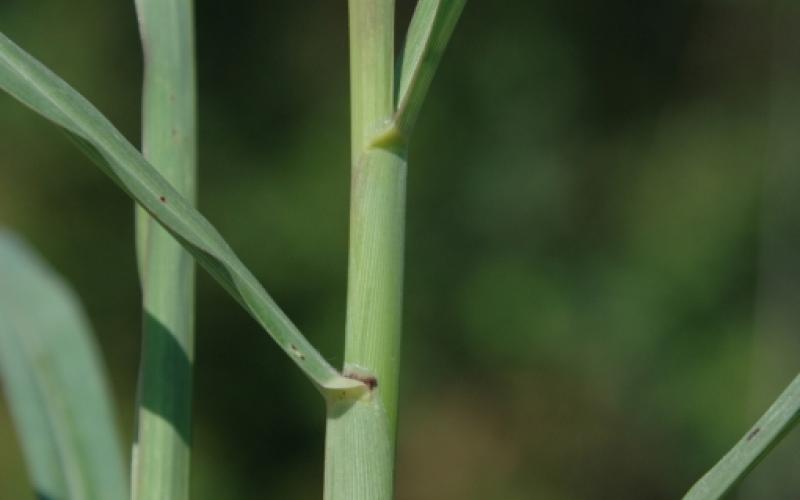Common names: Johnsongrass
Scientific name: Sorghum halepense L.
Legal status
All above and below ground parts of the plant must be destroyed. Additionally, no transportation, propagation, or sale of this plant is allowed. Failure to comply may result in an enforcement action by the county or local municipality.
Background
Johnsongrass is a tall (up to 8 feet), rhizomatous, perennial grass. The plant is native to the Mediterranean region of Europe and Asia but has since naturalized throughout the world. It was first introduced into the United States as a forage crop in the early 1800s.
Description
- Johnsongrass leaves grow up to 2 feet long and have a distinct, white midrib.
- Leaves are arranged alternately along a stout, hairless, somewhat upward branching stem.
- Seeds of this plant are small and enclosed in spikelets that appear in pairs along the panicles. A single panicle may have anywhere from 35-350 spikelets.
- The plant flowers occur in a loose, spreading, purplish panicle.
Habitat
Johnsongrass prefers full sun and disturbed soil but can tolerate a wide variety of habitats. This plant can be found in pastures, roadsides, ditches, abandoned lots, and waste areas. Johnsongrass is not drought tolerant and is sensitive to extreme temperatures but has been known to survive mild winters.
Means of spread and distribution
Johnsongrass can spread vegetatively from rhizomes or by prolific seeds. Rhizomes grow vigorously and can grow up to 60 feet in a single year. Johnsongrass seed can be carried by the water and spread by birds.
Impact
Johnsongrass is adapted to a wide variety of habitats including open forests, old fields, ditches, and wetlands. It spreads aggressively and can form dense colonies which displace native vegetation and restrict tree seedling establishment.
According to USDA estimates, Johnsongrass causes an annual loss of millions of dollars in agricultural revenue. The plant can reduce soybean and corn yields. Cotton not only experiences yield loss, but lint quality and strength are negatively affected.
Prevention and management
- Early identification and treatment are the best methods to reducing infestations of Johnsongrass.
- Mechanical removal of the whole plant and rhizome system is an effective method. Additionally, exposing the rhizomes to extreme heat or cold can be effective methods; this can be done in fall tillage to bring rhizomes to soil surface, where they may be killed by winter conditions.
- For chemical control, contact your local University of Minnesota Extension agent, co-op, or certified landscape care expert.
Toxicity
If grown under stressful conditions, it is possible for Johnsongrass foliage to produce toxic amounts of cyanide. Examples of such conditions include cold (i.e., frost), extreme heat, or drought. These levels of cyanide may be poisonous to livestock when ingested. Additionally, the high nitrate levels in the plant can further complicate the problem and produce nitrate poisoning in sheep and cattle.
